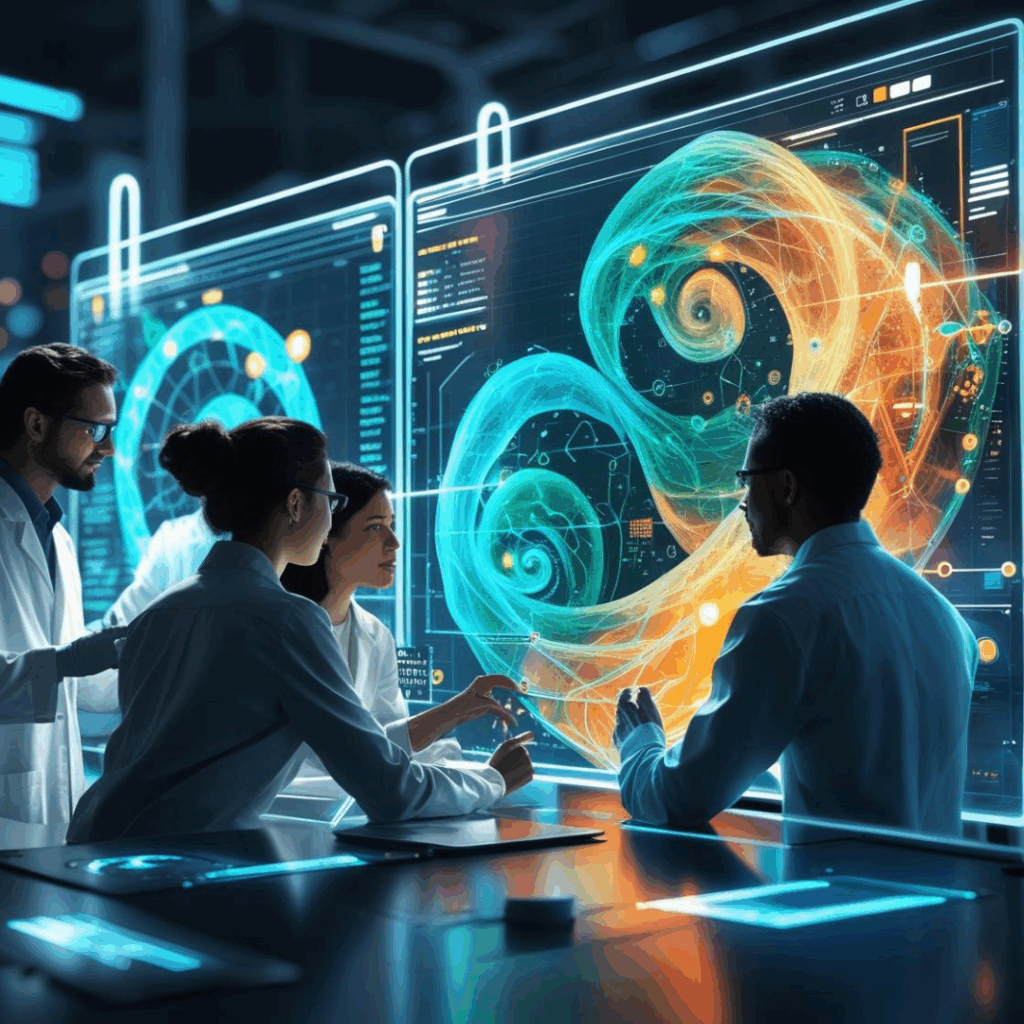A 10-Minute Guide to the Evolution of NLP
May 5th, 2025 WRITTEN BY FGadmin Tags: AI, GenAI, machine learning, natural language processing, NLP, structured data, use cases

Written by Sudarsana Roy Choudhury, Managing Director, Data Management
What is NLP?
Natural Language Processing (NLP) is a subfield of artificial intelligence and machine learning that focuses on the interaction between computers and human (natural) languages. It involves a range of computational techniques for the automated analysis, understanding, and generation of natural language data. Organizations across domains such as finance, healthcare, e-commerce, and customer service increasingly rely on NLP to extract insights from large volumes of unstructured data—such as textual documents, social media streams, and voice transcripts.
Key NLP tasks include tokenization, part-of-speech tagging, named entity recognition, syntactic parsing, sentiment analysis, and text classification. Advanced models, such as transformers (e.g., BERT, GPT), enable contextual understanding and generation of human-like responses. Real-time processing pipelines often integrate NLP models with stream processing frameworks to support use cases like chatbots, virtual assistants, fraud detection, and automated document processing. The ability to interpret, analyze, and respond to natural language inputs in real time is now a critical capability in enterprise AI architectures.
The positive impact of NLP has already started to be evident across the industry. NLP technologies have many uses today, from search engines and voice-activated assistants to advanced content analysis and sentiment understanding. The use cases vary by industry. Some of the very prominent use cases are
- Healthcare – e.g. Precision Medicine, Adverse Drug Reaction (ADR), Clinical Documentation, Patient Care and Monitoring
- Retail – e.g. Product Search and Smart Product Recommendations, Sentiment Analysis, Competitive Analysis
- Manufacturing – e.g. Predictive Maintenance and Quality Control, Supply Chain Optimization with real-time language translation, Customer Feedback Analysis
- Financial Services – e.g., Automated Customer Service and Support, Fraud Detection, Risk Management, Sentiment Analysis and Customer Retention
- Education – e.g. Personalized Learning, Automated Grading and Assessment, Enhanced Student Engagement by using chatbots, Accurate Insights from Feedback
The Evolution
The origins of Natural Language Processing trace back to early efforts in machine translation, with initial experiments focused on translating Russian to English during the Cold War era. These early systems were largely rule-based and simplistic, aimed at converting text from one human language to another. This foundational work gradually evolved into efforts to translate human language into machine-readable formats—and vice versa—laying the groundwork for broader NLP applications.
NLP began to emerge as a distinct field of study in the 1950s, catalyzed by Alan Turing’s landmark 1950 paper, which introduced the Turing Test—a conceptual benchmark for machine intelligence based on the ability to engage in human-like dialogue.
In the 1960s and 1970s, NLP systems were primarily rule-based, relying on handcrafted grammar and linguistic rules for parsing and understanding language. The 1980s marked a significant paradigm shift with the advent of statistical NLP, driven by increasing computational power and the availability of large text corpora. These statistical approaches enabled systems to learn language patterns directly from data, leading to more scalable and adaptive models.
The 2000s and 2010s witnessed a revolution in NLP through the integration of machine learning techniques, particularly deep learning and neural networks. These advancements enabled more context-aware and nuanced language models capable of handling tasks like sentiment analysis, question answering, and machine translation with unprecedented accuracy. Technologies such as recurrent neural networks (RNNs), Long Short-Term Memory (LSTM) networks, and later transformer-based architectures (e.g., BERT, GPT) propelled the field into a new era of innovation.
Today, NLP continues to evolve rapidly, enabling applications in conversational AI, voice assistants, real-time translation, and automated document analysis—transforming the way humans interact with machines across industries.
NLP and the Rise of Generative AI
The recent surge in Generative AI (GenAI) has propelled NLP into an even more central role in enterprise innovation. At the heart of GenAI systems lie powerful language models—such as GPT, PaLM, Claude, and LLaMA—that are built on foundational NLP principles. These models not only understand and generate human-like text but also drive a new class of capabilities: intelligent summarization, content creation, code generation, multilingual Q&A, and zero-shot reasoning. NLP techniques underpin key components of prompt engineering, retrieval-augmented generation (RAG), and fine-tuning, which are essential to customizing GenAI for domain-specific use cases. Whether powering copilots for legal review, AI agents for customer support, or personalized healthcare guidance, the synergy between NLP and GenAI is redefining how businesses engage with unstructured data and augment human intelligence at scale.
Looking Forward – What to Expect
As Natural Language Processing (NLP) continues to evolve, several forward-looking research directions and practical challenges are coming into sharper focus. A key area for advancement lies in contextual understanding and common-sense reasoning—enabling models to go beyond surface-level semantics and grasp deeper meaning and intent within language. Enhancing this capability is critical for more accurate human-computer interactions.
Another emerging frontier is multimodal learning, where NLP systems are integrated with visual, auditory, and sensory data to facilitate richer and more human-like comprehension. This convergence enables machines to understand context not only from text but also from correlated signals across various modalities—paving the way for applications in robotics, autonomous systems, and next-generation AI assistants.
However, the journey toward such advancements is fraught with technical, ethical, and economic challenges. The development and deployment of large-scale language models require extensive computational resources, raising concerns about energy consumption and the associated environmental impact. Additionally, algorithmic bias, often rooted in skewed training data, poses serious threats to fairness and equity in AI-driven decisions.
Data privacy is another pressing issue, particularly in applications involving sensitive user information. Furthermore, the ethical implications of AI-powered text generation, manipulation, and decision-making demand clear governance, transparency, and accountability.
Overcoming these challenges necessitates global, interdisciplinary collaboration—combining expertise from machine learning, linguistics, ethics, law, and policy. International partnerships and open research ecosystems will play a pivotal role in shaping a responsible and sustainable future for NLP.
How Fresh Gravity Can Help
At Fresh Gravity, our team brings deep and diverse expertise in Artificial Intelligence, combined with a proven track record of delivering innovative and efficient solutions. We specialize in addressing complex NLP needs by helping organizations define the right strategy, architecture, and implementation roadmap. From model selection and customization to deployment and ongoing optimization, Fresh Gravity empowers businesses to unlock the full potential of NLP technologies—driving smarter insights, automation, and enhanced user experiences. Our NLP capabilities are also at the core of our GenAI solutions, helping clients build domain-aware copilots, fine-tune foundation models, and deploy scalable AI assistants.
For more information, please write to us at info@freshgravity.com.
.png)







